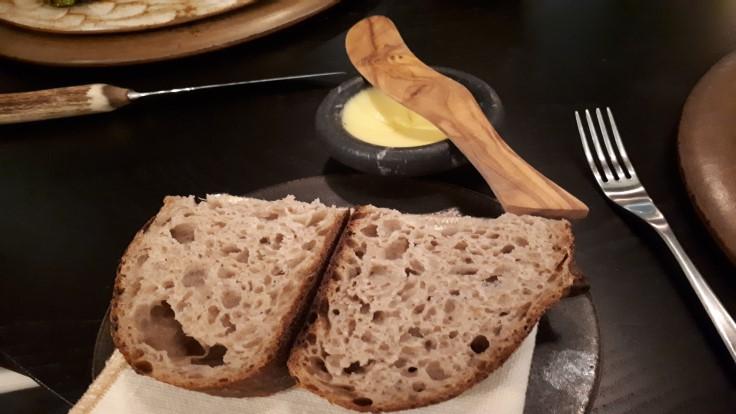Bread is one of the longest-standing and most diverse foods in the history of the world. Neolithic grinding stones and ancient Egyptian cave paintings attest to its earliest existence and it’s a staple of one and all, from the very poor to the very rich. It can be white or brown, savoury or sweet, and features from breakfast through to dinner, in everything from starters to desserts.
Before the development of the quicker-acting commercial variants, all bread was made using natural bacteria and yeasts – thus, all bread was sourdough; the name derived from the slightly sour and sometimes even bitter flavour imparted by the lactic acid produced during the slow fermentation process.

As bread-making moved out of homes and bakeries and into factories, the need for consistency and speed meant that sourdough all but disappeared from our daily lives. However, with the popularity of home-baking once again on the rise, sourdough has made a resurgence, and you’ll now find it in nearly every bakery and restaurant worth its salt.
The most important part of the process is the ‘starter’ or ‘mother’ mixture. Take some rye flour, add an equal quantity of tepid water, then cover and place it somewhere warm. Wait a few days for the mixture to start fermenting and the natural yeasts to bubble, then discard half of it and add more flour and water. This is called ‘feeding’ and can be repeated for weeks, months and even years using the same dough (it is often said to improve over time). Once you’re happy with the starter mixture, add in some flour, sugar and salt, then knead, stretch, prove, reprove and finally, bake.
The term sourdough can be applied to many different types of bread – white, whole grain, rye – and it is often flavoured with the likes of bacon, cheese or herbs. It’s not just loaves though, as sourdough pizza bases are now becoming the norm. You’ll also find chefs crafting specially flavoured breads to match their menus (accompanied by homemade umami-flavoured butters) or even serving it as a course in its own right.

San Francisco is widely regarded as the mecca of sourdough bread, with its rich history encompassing continuous production since the gold rush era which began in 1848. Miners – who were nicknamed sourdoughs – would carry the still-leavening ‘starters’ with them; not only was it easy to transport but bread was a great source of nourishment and could also be traded for other goods.
Today, many talk about its health benefits too. Nutrients such as iron, zinc, magnesium and folic acid are released during the fermentation process and, whilst not gluten free, the long fermentation period does help to break down the gluten to some degree, making it easier to digest.
With its rich history, health credentials and endless variations providing limitless flexibility, sourdough looks like it’s here to stay.
For a list of all the New Star Distinctions and Award Winners for 2020 click here
For all UK Star listings click here
For all Republic of Ireland Star listings click here
For all Bib Gourmand listings in the UK & Ireland click here







